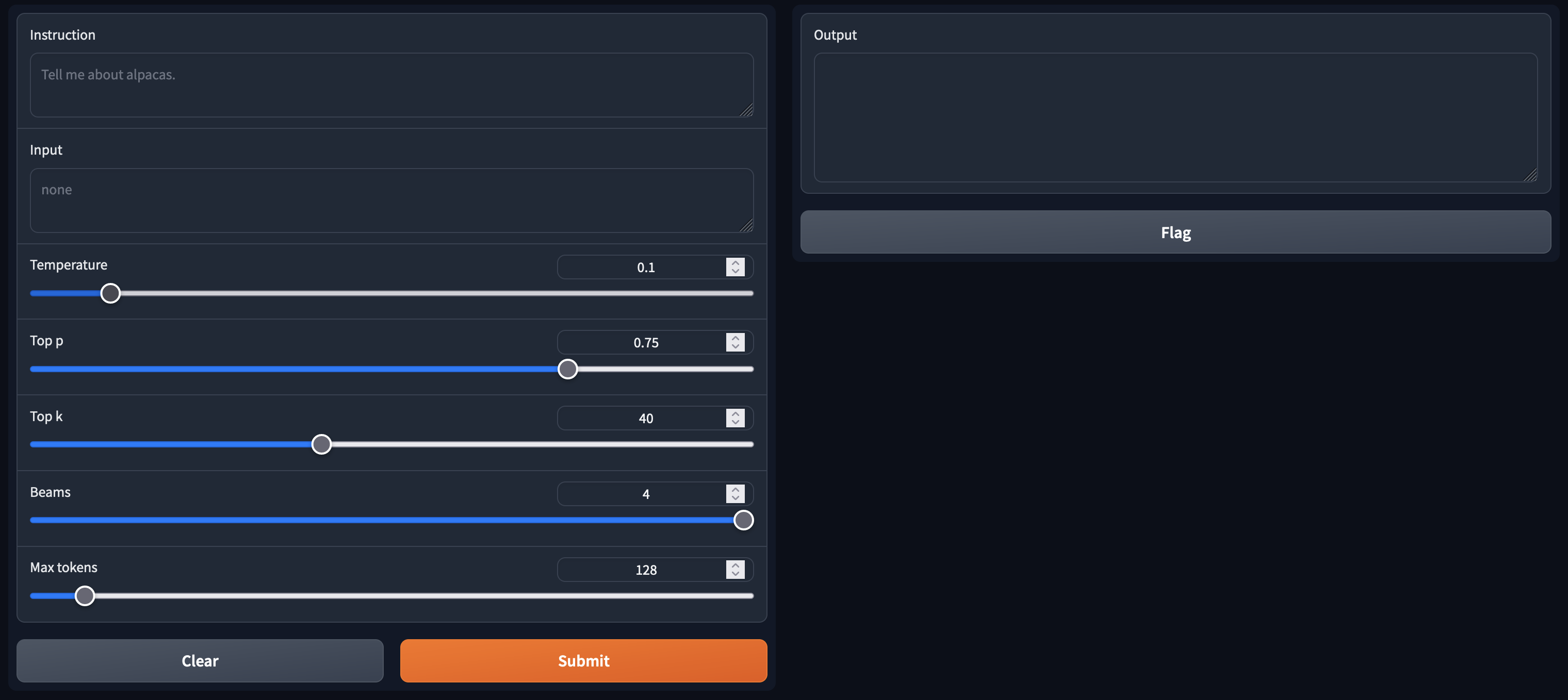Thanks to LLaMA and Alpaca-LoRA, you can train your own PetGPT at home. This GitHub repository offers a step by step guide in its README.md file.
This repository assumes that you have already found a way to download the checkpoints and tokenizer for LLaMA (e.g., by filling out this google form). You should create a subdirectory (named LLaMA) within this repository having a structure similar to the following tree.
LLaMA
├── 13B
│ ├── checklist.chk
│ ├── consolidated.00.pth
│ ├── consolidated.01.pth
│ └── params.json
├── 30B
│ ├── checklist.chk
│ ├── consolidated.00.pth
│ ├── consolidated.01.pth
│ ├── consolidated.02.pth
│ ├── consolidated.03.pth
│ └── params.json
├── 65B
│ ├── checklist.chk
│ ├── consolidated.00.pth
│ ├── consolidated.01.pth
│ ├── consolidated.02.pth
│ ├── consolidated.03.pth
│ ├── consolidated.04.pth
│ ├── consolidated.05.pth
│ ├── consolidated.06.pth
│ ├── consolidated.07.pth
│ └── params.json
├── 7B
│ ├── checklist.chk
│ ├── consolidated.00.pth
│ └── params.json
├── llama.sh
├── tokenizer_checklist.chk
└── tokenizer.model
4 directories, 26 filesClone the LLaMA repository to make sure that everything works as expected.
git clone https://github.com/facebookresearch/llama.gitThe LLaMA repository is already included here for reproducibility purposes in the folder named llama. You can now run the following commands.
cd llama
torchrun --nproc_per_node 1 example.py --ckpt_dir ../LLaMA/7B --tokenizer_path ../LLaMA/tokenizer.modelCreate an empty directory within this repository called LLaMA_HF. The following two scripts will then help you convert the LLaMA checkpoints and tokenizer to the Hugging Face format.
convert_llama_tokenizer_to_hf.ipynb
convert_llama_weights_to_hf.ipynb
These two scripts are simplied versions of convert_llama_weights_to_hf.py for pedagogical purposes.
This should result in a subdirectory (named LLaMA_HF) within this repository having a structure similar to the following tree.
LaMA_HF
├── config.json
├── generation_config.json
├── pytorch_model-00001-of-00002.bin
├── pytorch_model-00002-of-00002.bin
├── pytorch_model.bin.index.json
├── special_tokens_map.json
├── tokenizer_config.json
└── tokenizer.modelClone the Alpaca-LoRA repository.
git clone https://github.com/tloen/alpaca-lora.gitThe Alpaca-LoRA repository is already included here for reproducibility purposes in the folder named alpaca-lora. Within this folder, there is a file called alpaca_data_cleaned.json. This file contains a cleaned and curated version of the dataset used to train the original Alpaca. The following script will help you explore this dataset and build some intuition.
exploratory_data_analysis.ipynb
You can now use the following commands to finetune the LLaMA model on the alpaca_data_cleaned.json dataset.
cd alpaca-lora
mkdir output
WORLD_SIZE=4 CUDA_VISIBLE_DEVICES=0,1,2,3 torchrun --nproc_per_node=4 --master_port=1234 finetune.py --base_model ../LLaMA_HF --data_path alpaca_data_cleaned.json --output_dir outputThe command given above works for a machine with 4 GPUs. You should adjust it according to your own setup.
Once the finetuning process is finished, it will write the model artifacts in a folder called output.
alpaca-lora/output/
├── adapter_config.json
├── adapter_model.bin
├── checkpoint-1000
│ ├── optimizer.pt
│ ├── pytorch_model.bin
│ ├── rng_state_0.pth
│ ├── rng_state_1.pth
│ ├── rng_state_2.pth
│ ├── rng_state_3.pth
│ ├── scaler.pt
│ ├── scheduler.pt
│ ├── trainer_state.json
│ └── training_args.bin
├── checkpoint-600
│ ├── optimizer.pt
│ ├── pytorch_model.bin
│ ├── rng_state_0.pth
│ ├── rng_state_1.pth
│ ├── rng_state_2.pth
│ ├── rng_state_3.pth
│ ├── scaler.pt
│ ├── scheduler.pt
│ ├── trainer_state.json
│ └── training_args.bin
└── checkpoint-800
├── optimizer.pt
├── pytorch_model.bin
├── rng_state_0.pth
├── rng_state_1.pth
├── rng_state_2.pth
├── rng_state_3.pth
├── scaler.pt
├── scheduler.pt
├── trainer_state.json
└── training_args.bin
3 directories, 32 filesHere is how you can interact with the finetuned model.
python generate.py --load_8bit --base_model ../LLaMA_HF --lora_weights output --share_gradio FalseThe final screen hosted on http://0.0.0.0:7860 will look like the following image.
